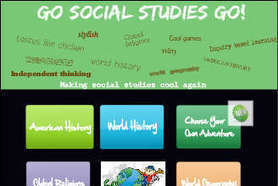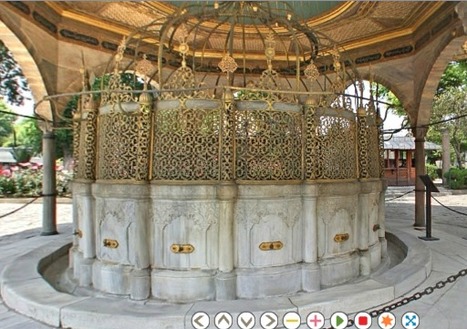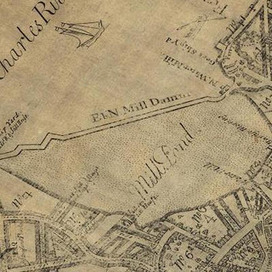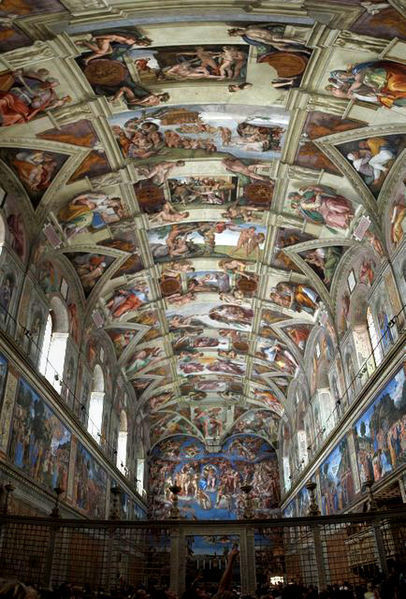This is a great blog primarily about teaching history and scoial studies with an emphasis on using technology and social media to enrich the learning environment. Definitely worth following for educators hoping to gain new perspectives on pedagogy in a changing technological landscape.
Get Started for FREE
Sign up with Facebook Sign up with X
I don't have a Facebook or a X account
 Your new post is loading... Your new post is loading...

Shelby Redman's curator insight,
December 2, 2013 2:55 PM
Music tells our stories and shows a lot about the time in which it was made. This would be amazing to incorporate into the classroom. Teachers could break students up into groups and have them work on individual songs and pull historical inferences from them. Then you could bring the class back together to discuss. There a lot of great visuals included in these videos.
Jacob Crowell's curator insight,
December 8, 2014 11:38 AM
Catalonia is not Spain. A region that can draw tourism on its own merits that is distinctly Catalonian and not Spanish. These people have strong cultural ties to Catalonia that makes it distinguishable from Spain.
Jacob Crowell's curator insight,
December 15, 2014 12:57 PM
Visiting the Haga Sophia is on my bucket list for sure! I find it fascinating how one beautiful site can radiate so many different historical periods as well as cultural differences. The Haga Sophia has traces of the religions and people that held control over it at one time or another. 
Matt Ramsdell's curator insight,
December 7, 2015 4:59 PM
Haga Sophia is a cultural landmark that has been a Christian and Muslim holy site that all depends on who was in control of the land of that particular time. This is a great example of different times in history that use the same monument and how it plays a significant role in the people of time past and present.
Adam Deneault's curator insight,
December 14, 2015 4:29 PM
This is a place of both Christian and Muslim society. It is in control by a system of sequent occupancy, meaning that who ever is in control of the area of the time is in control of the Haga Sophia. This one site shows the past of different religions and people. It tells a story of its past, present and future.

Nicole Kearsch's curator insight,
November 1, 2014 9:40 PM
While we sit here on Facebook and Twitter for a way to connect with friends, share photos of our vacations or follow our favorite celebrities every move places in North Africa and some of the Middle East are using social media to change their country. In countries like Tunisia, Libya, and Egypt people have used these social media sites to disperse information to the general public. Where a rally will be held, a map of where police forces will be located, and what to do in the event teargas is used are all topics for discussion on social media. With the use of these websites a larger group of people are able to take part in the overthrow of the government. With leaders restricting the access to the web even more people were intrigued to join the protests. When people can't follow along on the internet the events they decided to go take part in the events themselves. With the use of these social media websites the Arab Spring in these areas was able to be as successful as it was.
Kendra King's curator insight,
April 27, 2015 5:27 PM
I think it is important that technology plays a role in these revolutions. Before, if a revolution happened, the dictator could just silence its population. Now the population has things like Facebook and Twitter to mobilize their plans of attack for meeting places and advice about how to confront the government. As such, the power of the citizens has grown and according to the article some argue it was this power that made the government officials in Egypt and Tunisia stand down. I tend to agree since the coverage of the event helped increase the size of the demonstrations.
I love that these protests for democracy are being led by the citizens. Since the citizens actually want this type of government, there is actually a chance that this might be what the country needs. As you mentioned during the Solar Diem video, what works for one society may not translate to another. The author of this piece is more than likely from a western democracy given how the author thinks "democratic change offers the only solution" to issues like poverty and internal strife within "Arab" countries. Yet, that isn't the case in the Middle East. By forcing a democratic revolution on Iraq, the region is more destabilized than it was under the harsh command of Saddam Hussein. As you mentioned in class, Iraq needed a dictator like Hussein to keep peace though. So as helpful as technology might be for democratic revolutions, democratic revolution might not be the answer to every countries problems. 
Chris Costa's curator insight,
October 26, 2015 2:46 PM
The Arab Spring owes its origins to the mass use of social media websites to get organized and launch the protests that ultimately overthrew several dictators in the region. Social media was crucial for the movement to spread like wild fire, as young people all over North Africa and the Middle East banded together against the tyranny of their governments. Protests broke out in every capital of the region, noticeably in Cairo, where the protests briefly transcended ethnic and religious disputes in the name of freedom for all. Although the movement has long since fizzled out in the face of increased violence, instability, and the lack of a consensus among protesters as to what their next move should be, the Arab Spring served as a powerful example as to extent of which the Internet will now play in global affairs. It is a powerful tool that has completely revolutionized the way we live our everyday lives, and it has completely changed the game for much of North Africa and the Middle East. |
Cam E's curator insight,
February 27, 2014 10:50 AM
This is a very cool opportunity due to the fact that photography isn't usually allowed in the Sistine chapel. Of course it can't compare to the beauty of the place in person, but in some ways it's almost more powerful as this room is usually filled to the brim with tourists, seeing it empty is a bit more striking as you can appreciate the fool instead of missing it in the crowds of people. |





























